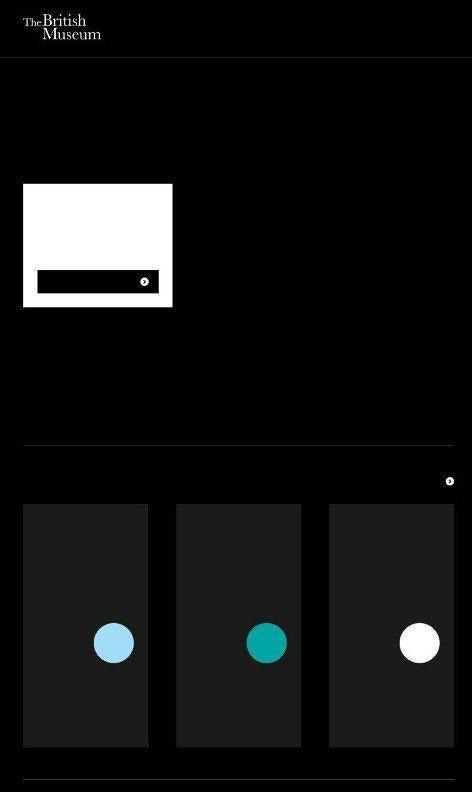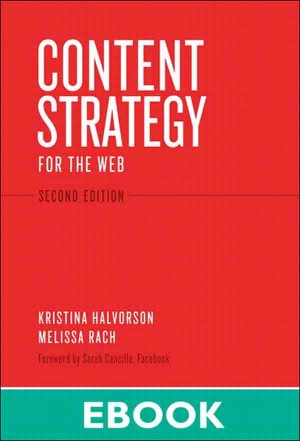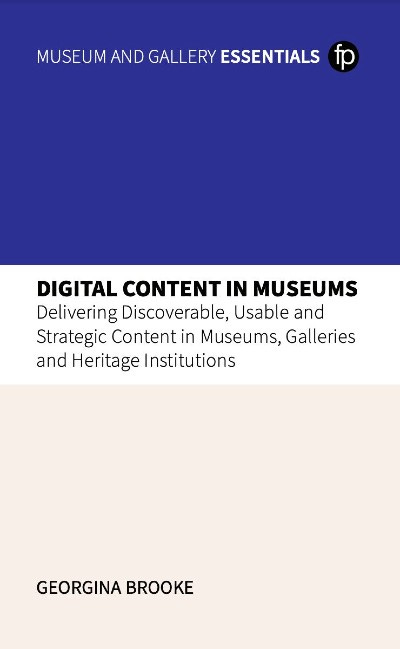One of the tricky things about being a Content Strategist is that people have wildly different understandings of what Content Strategy is.
Here's my take…
What is content strategy?
This isn’t well understood, partly because there’s a certain amount of woolliness around how we use both ‘content’ and ‘strategy’.
What is content?
One of the biggest misconceptions I come across is that content is ‘just words’. Firstly, if you strip out every bit of wording from a museum website, the importance of words becomes quite apparent:
The British Museum homepage sans content
But also content isn’t necessarily just words. In the words of Sarah Winters, it might also be “pictures, diagrams, charts, links, calendars, a series of questions and answers, videos, addresses, maps, calculators, spreadsheets, printable documents, and many more besides.”
Almost every arts institution is already creating some kind of content around temporary events and exhibitions. But the numbers creating content around the evergreen and unique reasons to visit your institution are much more limited.
It’s even rarer, if those pages exist, for them to use SEO principles to effectively tell Google what is significant and particular to the institution about those unique reasons (be that a key collections piece, a local story or the expertise of your experts).
It’s easy and simple for an institution to think how it was performing last year is the competition. But in the eyes of a cultural institution’s audience, Netflix is your competition - what have you got that’s more interesting than a few hours on the sofa with a film or series? Does your website and social media articulate that? And is it the same group of people reading that content as were five years ago?
What is strategy?
Richard Rumelt, author of Good Strategy, Bad Strategy, defines strategy as:
“A cohesive response to a challenge. A real strategy is neither a document nor a forecast but rather an overall approach based on a diagnosis of a challenge. The most important element of a strategy is a coherent viewpoint about the forces at work, not a plan. A good strategy is a coherent mix of policy and action designed to surmount a high-stakes challenge.”
One of the important differences between the ‘strategic plans’ of most arts organisations and a strategy is that a strategy must look at what’s not working. It must be clear eyed and objective about the ways in which the organisation is not keeping step with a changing landscape and identify drivers to change that trajectory. Our sector is good at creating documents which essentially say ‘here are some things we’re all working towards and thinking about right now’ or ‘here are some wonderful things we did with your funding and support, thank you’, rather than an actual strategy.
Strategies also have positive elements of course; identifying the unique strengths of an organisation and the opportunities that a particular moment/ set of circumstances afford. But it can’t be just this. A strategy must also be outward-looking; it must understand the landscape in which the organisation operates, and the forces at play.
For an arts organisation’s digital content strategy, one of the challenging forces at play is likely to be around attention. We create content in a very busy and competitive environment. Cutting above the noise is increasingly difficult. Particularly without a very distinctive online approach. A digital strategy can’t simply be an internally facing document that just compares itself this year with itself last year. That’s not going to cut through.
A few different definitions of content strategy
It’s easy to talk about a Content Strategy like it’s a recognised format, but it’s not.
One of the knottiest difficulties around content strategy is that there are lots of different definitions out there. Kristina Halvorson was the earliest figure to dominate the field and her book Content Strategy for the Web is still widely referenced.
In it, she states that content strategy:
Defines how you’re going to use content to meet your business (or project) goals and satisfy your users’ needs
Guides decisions about content throughout its lifecycle, from discovery to deletion
Sets benchmarks against which to measure the success of your content
In summary: Content strategy guides your plans for the creation, delivery, and governance of content.
This last sentence has since been picked up by Wikipedia, so that the most likely answer you got if you Googled ‘what is content strategy?’ was ‘Content strategy focuses on the planning, creation, delivery, and governance of content.’
This is not a definition. A strategy might focus on how to win a battle, or it might focus on how to dominate in search for a new brand of cereal. What it focuses on does not tell us what strategy is.
Incidentally, Wikipedia’s definition has now changed and currently defines content strategy as “Content strategy guides the planning, development, and management of content. It is a recognized field in user experience design, and it also draws from adjacent disciplines such as information architecture, content management, business analysis, digital marketing, and technical communication.” Again – I think this tells you what Content Strategy does not what it is. I also think this definition could equally apply to Content Design. As I see it, both Kristina Halvorson’s ‘Content Strategy for the Web’ and Sarah Winters’ ‘Content Design’ books describe very similar processes, that are very different from what the sector means by ‘content strategy’.
I’ll unpack this more below; but in simple terms, I think it’s useful to define Content Strategy as a strategy where effective content is used to meet the organisational challenge.
What GLAMs mean when they say ‘content strategy’
In my capacity as Senior Content Strategist in the cultural sector, I work on a wide range of projects called ‘content strategy’. For example:
We’ve got funding for a new website, help us design a strategy and implementation plan for our content to make it as good as possible.
We want to work out how to use digital to more effectively meet our business aims around – for example – income generation, expanding audiences, fundraising, and converting our existing audience into deeper levels of engagement.
We want to work out how to use digital to more effectively meet our philanthropic aims around – for example – supporting marginalised audiences in the community and delivering our learning projects, or working collaboratively with audience groups we know we haven’t reached historically.
We tried a bunch of stuff online between 2020-3, it differed wildly in how successful it was. Can you help us work out what to keep/delete/evolve?
Similar to the above, we spend loads of time and effort on digital tasks, but we’re not sure if we’re spending our energies in the most effective ways. Help.
What’s interesting here is that there is a difference between what Kristina Halvorson, Sarah Winters and the broader content discipline mean when they talk about ‘content strategy’, and how the culture sector often uses the term.
Both Kristina Halvorson’s (who heads up the consultancy Brain Traffic) and Sarah Winters’ (who heads up the consultancy Content Design London) background is in websites. Brain Traffic’s work largely looks at large corporate websites in the private sector and higher ed. Sarah’s work is derived from her creation of www.gov.uk – so informed by user needs in a web public service context around getting the right information quickly and efficiently.
These are slightly different from the user needs and questions cultural organisations are often asking when they talk about ‘content strategy’. Sometimes, it’s true, cultural organisations do have a specific project which purely wants to work out how best to make their website content, or part of it, more effective. But often the questions are broader, and are less certain or fixed that the best strategy for them will be purely website content related. A solution is likely to also encapsulate social media, in-gallery digital, email and so on. Often the most effective solution in these scenarios will be a combination of smarter website content, in conjunction with other online platforms, and organisational change.
Final words on what content strategy is
If we follow Richard Rumelt on strategy; “a policy and action designed to surmount a high-stakes challenge”, content strategy is using digital content as a means to surmount that challenge.
This may seem an oxymoron; if strategy is working out the means to the end, doesn’t it pre-empt things to stick ‘content’ in front of it? And why is content strategy such a large and growing field if it’s essentially a contradiction in terms?
The reason content strategy as a discipline has taken off is that it’s very likely that doing your digital content better will help answer wider organisational challenges. When we talk about content strategy, very often – particularly in the cultural sector – we’re talking about audience development by stealth. ‘Content strategy’ is often used as means to solve more difficult questions, such as:
How can I make my institution more relevant to a wider group of people?
How can I make sure we’re visibly in-step with digital trends in our online comms?
How can we engage a younger demographic?
How can we use digital to capture wider interest?
Are we doing enough to reach non-traditional audiences?
Examples of how content strategy is often used as an audience development case study in the sector might include:
‘We could see we weren’t recruiting millennials so we got really good at Twitter’ (a strategy that worked well from c. 2016-2020 – today we might swap out TikTok for Twitter).
There’s another version that goes ‘people couldn’t come and see us perform during COVID, therefore let’s create a platform so that those audiences –- and audiences we wouldn’t normally reach –- can engage with us digitally’.
Or ‘our segmentation model shows us we over-index on X, Y and Z, but underrepresent A, B and C’. Identifying how best to grow, reach and engage A, B and C will likely involve content strategy.
For most museums today, a good content strategy will define policies and actions to redefine the role digital can play in audience development.
This piece is adapted and updated from a One Further blog post I wrote in 2021.
Got a content strategy question you’d like to ask? Get in touch; georgina@onefurther.com
In other exciting news, I have a book cover! Get your name down if you’d like to be told when once it’s out and get any discount codes that are going:







Another great article Georgina, you provide industry knowledge with best practice in other sectors. Your content is relevant to your audience and their common problems.
Keep up the good work.